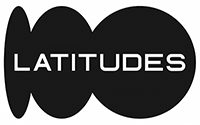Clive Sithole

Clive Sithole (b. 1971, Soweto, Johannesburg, South Africa) Clive Sithole’s vision as an artist explores landscapes and vessels of containment, expanding our notions of inclusion, belonging and exile.
The work is rooted in a deep physicality that emerges from nature; supportive and powerful. Born in Soweto in 1971, Sithole has honed his career though a life-long practice of extending traditional notions of form and function through his dedication to ceramics, making and clay. In 1978, Sithole moved to Lesotho for a year as an 8-year-old child, where he learned to make animals from river clay, and spent much time taking care of the cattle that would later become a dominant theme and symbolic imagery in his art. Sithole moved to Durban in his twenties and began his career as a practicing ceramic artist at the BAT Centre in 1997.
Fascinated by the work of Nesta Nala, Molelekoa Simon Masilo and Bonnie Ntshalintshali, Sithole soon developed his own distinct style that catapulted him into the realm of award-winning and internationally recognised artist and teacher. The domination of land that permeates Sithole’s current work stems from the forced exile imposed on South Africa’s people by the colonial and apartheid system. For Sithole, land is about what people have access to, and what they are denied. A strong feminine energy inhabits the work, a tribute to his sisters, his mother, and the predominantly female support and nurturing he has experienced during his career development.
Sithole sees the land as distinctly feminine, and the Goddess imagery that runs through the exhibition works is emphasised by the symbolic veneration of the cow as a symbol of nourishment, and the ancestors that continue to watch over us. Sithole received a post-graduate diploma in fine art cum laude through the University of KwaZulu-Natal, Pietermaritzburg, in 2006.
He has exhibited in the United States, Tokyo, London, Mexico and China, and his work appears in collections the likes of the Smithsonian, Windsor Castle and the Royal Collection Trust. Sithole draws his inspiration from people who make, and the routines and repetitive movement of people’s hands in the process of creation, from hair plaiting to basket weaving.
Sithole’s vision looks away from machines, screens and contemporary technology to a more fundamental and emotionally-rooted question. From a landscape of texture and shadow, layers are peeled away by Sithole’s work. Kumnyama Kubomvu: This Land is Ours calls us to attention and asks what it is that our hands have made of the land we inhabit.
Sithole is currently based at his studio at the Phansi Museum in Durban, where he works and mentors younger creatives.
Written by Kirsten Miller
Read More
-
-
-
-
-
-
-
-
- Clive SitholeUmhlaba Uyahlaba: UnoMkhumbulwane, Umhlambi, Izikhonkwane Igazi, AmanziR 250,000.00 ex. vat















